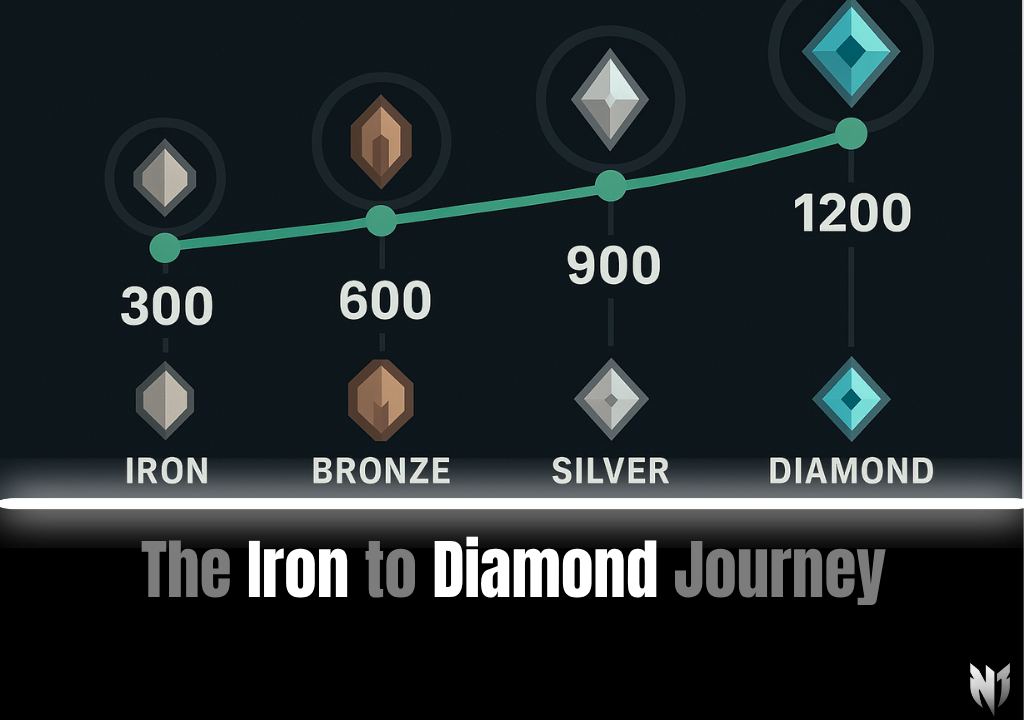

Curious about the MMR milestones for each rank in Valorant? Learn how to track your progress and understand the MMR ranges that correspond to visible ranks in Valorant at MMRValorant.com!
Valorant players know that the grind to climb ranks can be both exciting and challenging. One of the biggest mysteries for many players is understanding the connection between their Matchmaking Rating (MMR) and their visible rank (RR). In this comprehensive guide, we’ll break down the MMR milestones that correspond to each visible rank from Iron to Diamond. Whether you're trying to understand where you stand or plan your rank progression, this guide will help you track your MMR milestones for each rank.
MMR (Matchmaking Rating) is a hidden number that represents your true skill level in Valorant. Unlike your visible rank (RR), MMR is not displayed publicly, but it directly influences matchmaking and your ability to climb the ranks. It fluctuates based on your performance in ranked matches, including wins, losses, and individual performance metrics like kills, deaths, assists, and objective completions.
Each rank in Valorant is tied to a specific MMR range, which is used to match you with players of similar skill in competitive games. Understanding the MMR milestones for each rank can help you gauge your progress and know how much more effort is needed to climb to the next rank.
The Iron ranks, including Iron 1, Iron 2, and Iron 3, represent the lowest skill levels in Valorant. To achieve these ranks, players usually have an MMR between **0 - 1000**. Players in Iron rank often struggle with basic game mechanics like aim, positioning, and team coordination.
Players in the Bronze rank have an MMR range between **1000 - 1500**. Bronze players are still working on fundamental gameplay aspects, but they usually show improvement in their awareness and aim compared to Iron players.
Players in the Silver ranks have an MMR between **1500 - 2000**. Silver players start to understand game mechanics, positioning, and basic team strategies. However, they still have a long way to go in terms of individual skill and match awareness.
Gold players, with an MMR range of **2000 - 2500**, have a good grasp on the game’s mechanics. They know when to engage in fights, how to rotate, and begin to master more complex aspects of team coordination. Gold is often a transition point between basic and advanced gameplay.
Platinum players, with an MMR range of **2500 - 3000**, exhibit strong game knowledge, superior aim, and excellent team coordination. Players in Platinum understand the nuances of timing, positioning, and using agents’ abilities efficiently. They are typically competitive players who know how to capitalize on small advantages.
Diamond players, with an MMR range of **3000 - 3500**, are highly skilled and competitive. They have mastered most aspects of the game, including map awareness, game sense, and advanced strategies. At this level, players are often playing with or against top-tier competitive players.
Understanding the MMR milestones for each rank in Valorant is essential for players who are serious about improving their gameplay and ranking up. By tracking your MMR, you can better understand how close you are to advancing to the next rank and make improvements where necessary.
If you want to track your MMR progress and gain valuable insights into your skill level, be sure to check out MMRValorant.com. This platform helps you monitor your MMR, track your match history, and get personalized tips to climb the ranks faster. Visit MMRValorant.com today to take your Valorant experience to the next level!
Professional boosting with No Cheats, 100% Refund Guarantee, and Trusted Boosters.